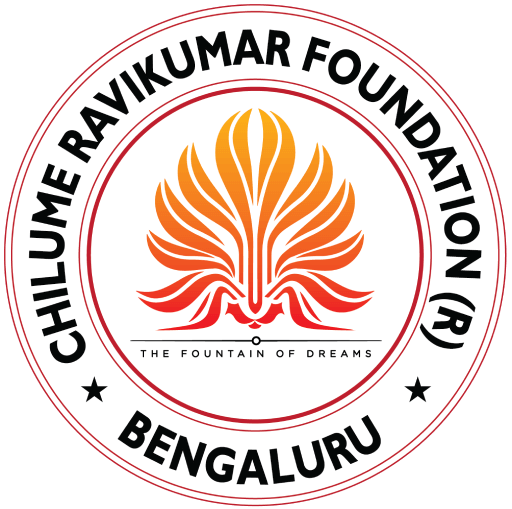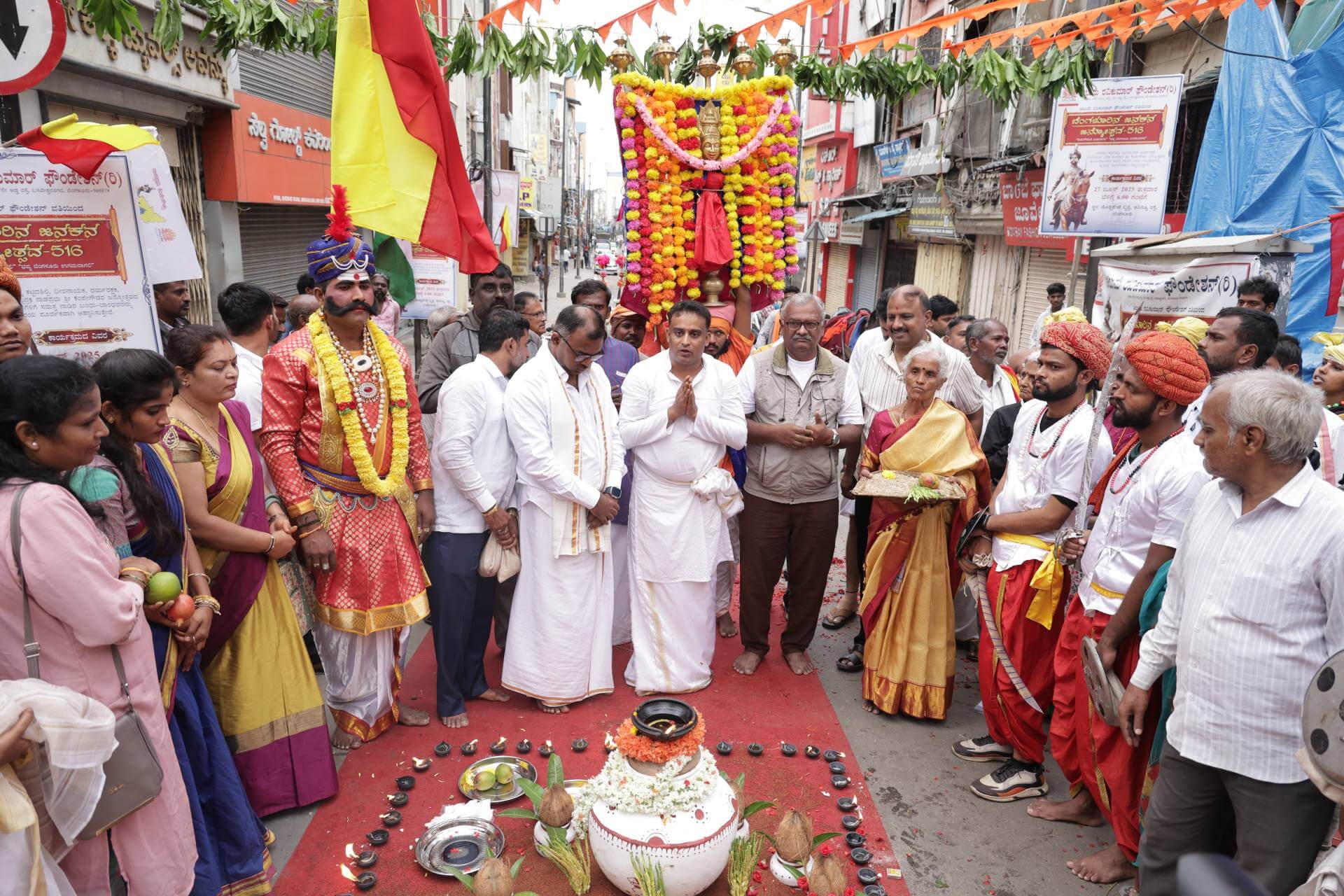Why this year felt different ?
For Bengaluru, Kempegowda Jayanthi isn’t just a date—it’s a reminder of the city’s founding values: civic duty, inclusivity, and foresight. This year, under the leadership of ChilumeRavikumar, the commemoration stepped out of auditoriums and into the streets as a “Bengalurina Janakana Janmotsava”—a people’s festival that invited citizens to celebrate through action, service, and shared heritage.
What actually happened: Highlights of the 516th year
1) Parisara Shuddhi Abhiyana (Community Clean-up)
The journey began at Kempegowda Samadhi with a dawn clean-up drive. Volunteers gathered as early as 5:30 AM, received a brief on Kempegowda’s civic vision, and then rolled up their sleeves to clean the precincts. The drive closed with a public pledge to uphold cleanliness and civic responsibility—bringing Kempegowda’s ideals into everyday action.
2) Pushparchane Namana (City-wide Floral Tributes)
A day later, citizens offered floral homage at six symbolic locations linked to Kempegowda’slegacy—Kempegowda International Airport statue, Lalbagh Gopura, Hudson Circle, Vidhana Soudha, KIMS Hospital, and Gavi Gangadeshwara Temple. Folk songs, inter-generational conversations, and neighborhood participation turned tribute into community.
3) Nadaprabhuge Deepa Namana (516 Lamps for 516 Years)
On Jayanthi evening, 516 lamps were lit at the Samadhi, creating a luminous, collective salute to the founder of Bengaluru—one lamp for each year of his enduring legacy. Swamijis, dignitaries, youth, and families joined Chilume Ravikumar in the ceremony, giving the commemoration both spiritual warmth and civic purpose.
4) Heritage brought alive—street reenactments
A dramatic street reenactment on Avenue Road brought the city’s origin story to life, drawing crowds and sparking conversations about how heritage can guide modern Bengaluru.
Quick Summary
• City-first, citizen-led celebration
• Clean-up & civic pledge at Kempegowda Samadhi
• Floral tributes at six landmark sites
• 516 lamps lit on Jayanthi evening
• Street reenactments to engage the public
From remembrance to relevance
This reimagined format does more than pay homage—it translates reverence into responsibility. As several features noted, the intent was to move beyond stage programs and make participation easy, meaningful, and city-facing—so that Kempegowda’s vision isn’t just recalled once a year but practiced, together.
Why it matters for Bengaluru—now
• Civic consciousness: Hands-on acts (like the clean-up and pledge) nurture daily habits that keep neighborhoods livable.
• Cultural continuity: Folk art, temples, and public spaces become touchpoints for all ages to connect with Bengaluru’s roots.
• Shared ownership: When celebrations move outdoors, more people can join—transforming spectators into stakeholders.
• Citywide alignment: The people-led initiative complemented official observances across Karnataka marking June 27 as Kempegowda Jayanti.
The human thread: Who showed up (and why)
From students and elders to local artists and neighborhood groups, participation cut across backgrounds. Many spoke about the pride of honoring the “Janakana” (people’s leader)with deeds—cleaning shared spaces, singing folk songs, and lighting lamps together. That shared, cross-generational ownership is what turns a festival into a movement.
Looking ahead: An annual public tradition in the making
By centering service, heritage, and participation, the Janakana Janmotsava model offers a blueprint for future civic festivals in Bengaluru—simple actions anyone can join, scale city-wide, and repeat yearly. It’s a celebration that belongs to everyone—and one that can grow with each passing year.
How you can be part of it next year
• Volunteer for early-morning clean-ups at heritage sites
• Join a floral tribute at a landmark near you
• Light a lamp with your family on Jayanthi evening
• Support local folk artists and neighborhood groups that keep the city’s cultural memory alive



